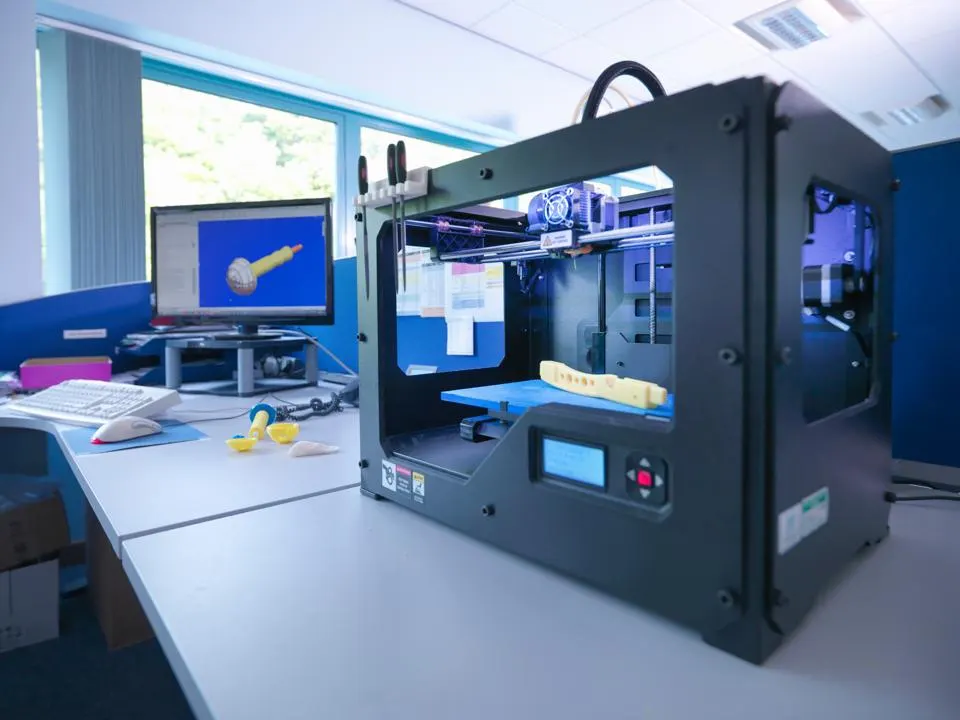Recent events have made it very clear that today’s global supply chains leave manufacturers and their customers vulnerable to external risks. Almost 75% of supply chain executives reported major supply chain disruptions in 2020 due to Covid-19, with almost half reporting they didn’t have a plan in place to deal with such a disruption.
Integrating 3D printing into manufacturing operations to increase localized production can add flexibility and resiliency to supply chains. Despite these benefits, manufacturers remain skeptical. A 2017 survey of manufacturing decision-makers showed that while 81% are using additive manufacturing, only 29% are using it for production parts.
If additive manufacturing can provide so many benefits to their supply chains, why do many manufacturers remain hesitant to fully embrace the technology?
The Belief That Additive Manufacturing Is Expensive And Slow
The Covid-19 pandemic and the economic fallout that has accompanied the crisis has put a spotlight on 3D printing. From industry leaders all the way down to small businesses operating out of their homes, additive manufacturing is being used to rapidly produce equipment to fight the pandemic such as face masks, ventilators and nasal swabs. Many are giving the technology credit for helping to fight the global pandemic, and some believe that this could be the turning point for 3D printing. However, others are holding on to the years-old belief that 3D printing is a slower, more expensive way of manufacturing.
While it’s unfair and inaccurate to paint the entire industry in this light, there is an element of truth to it.
3D metal printing illustrates the tension between vision and reality, especially since it has enormous potential for manufacturing. Currently, there are several methods for 3D metal printing, but the main technologies manufacturers use to date are powder-based, such as powder bed fusion and binder jetting. These technologies use metal powders that are fused together to create parts. Metal powders are expensive and dangerous to handle, which means production teams need additional safety measures. Post-processing steps such as depowdering, heat treatments and machining also add hours and significant costs to the process.
Technology Not Quite Ready for Prime Time
A decade ago, everyone thought we were on the cusp of a “3D revolution.” Unfortunately, the technology at the time wasn’t ready to live up to these predictions, and in many ways, the industry is still working to rebound from inflated expectations. Manufacturers who became early adopters in the first “hype cycle” got burned from immature technology that has made them hesitant to go down that path again.
How Can The 3D Industry Truly Gain A Foothold In Manufacturing?
To make an impact in the manufacturing world beyond prototyping, the 3D printing industry needs to do a few things:
1. Reduce costs and increase speed to eliminate the criticisms that 3D is expensive and slow. This is particularly important when it comes to 3D metal printing, which will be a focus for manufacturing. We must find safer alternatives to costly metal powders, such as liquid metal. New technologies that cut down on post-processing also will be critical to improving cycle time and reducing costs to make the technology more attractive to manufacturers.
2. Gain access to a global service network that can be easily deployed. Large enterprise companies in the automotive, aerospace and heavy machinery industries stand to benefit the most from integrating 3D into their supply chains. However, they also cannot afford to have significant downtime if a machine encounters an issue and they’re not used to relying on small providers to service their big needs. They will expect the same robust level of service they receive from more established vendors in other areas of their business.
3. Learn from the past. Most manufacturers are not looking to completely overhaul their production line and supply chain with a 3D “revolution.” Instead, they are looking for technology solutions that make their current operations more efficient and effective. The additive manufacturing industry should focus on how to best integrate 3D printing solutions into manufacturers’ existing workflows and supply chain needs rather than pushing a revolution whose time, for now, has not quite arrived.
In addition to the supply chain benefits, 3D will also allow manufacturers to reduce their carbon footprint by using materials more efficiently and reducing the transportation costs of finished parts. With sustainability being a front-of-mind concern for many companies, this could be an additional driving factor for increased adoption of the technology.
As we look to the future, there is a tremendous opportunity for the 3D printing industry to gain a permanent foothold in manufacturing. By demonstrating we can be a trusted partner that empowers supply chains, 3D manufacturers will be well-positioned to make important inroads today and build confidence in what’s possible tomorrow.
Originally posted on: Forbes.com

